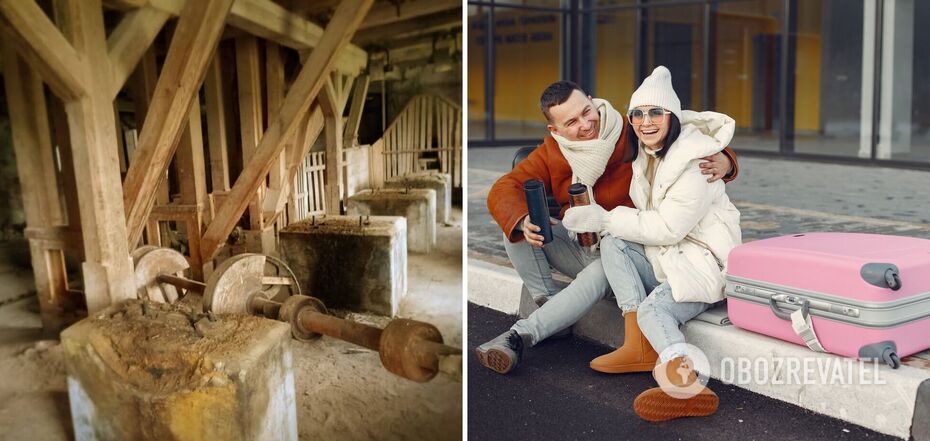News
Uhniv: a journey to the smallest and most inconspicuous city in Ukraine
A few kilometers from the Ukrainian-Polish border lies an ancient settlement that appears to have fallen into a dormant slumber. It seems as though time came to a halt here half a century ago. There are no festivals or skyscrapers in sight.
You won't find it on TV. There are no tourist routes leading to it. No guide will include it in their itinerary. But it wasn't always like this. Uhniv used to thrive and progress rapidly.
History of Uhniv
The earliest mention of a settlement in this area dates back to 1360. However, many researchers believe that Uhniv was referenced in the Tale of Bygone Years. During that time, it was noted as one of the counties of the Czervenia land.
For a certain period, life flourished here, and local craftsmen were esteemed among the Polish nobility. In 1462, by the decree of Casimir IV, the settlement was officially designated as a city. It was endowed with the Magdeburg Law, granting it a public council, judiciary, and other governing bodies.
During that era, the region was recognized as a hub for various crafts. Five workshops operated here, with the most renowned being the factory that produced distinctive boots. Ivan Franko even visited three times to document the unique footwear and its manufacturing process.
The town boasted all the amenities for a contented life. Schools, financial institutions, a post office, and a telegraph office were established. However, everything changed with the onset of World War II. Most of the locals departed, and those who remained were forcibly relocated in 1946-1947. Subsequently, Uhniv became a sealed border town.
Prior to the full-scale invasion, the majority of the native population returned annually to pray in the old church, which was specially opened for them. Unfortunately, accessing it now is quite challenging as the building is dilapidated.
Presently, fewer than a thousand residents are officially registered in the village. If you ever consider visiting, we've compiled a list of places to explore.
Uhnivska Mill
This grand stone windmill replaced a wooden predecessor. The edifice, boasting four floors, is striking in its magnitude. The identity of its builder remains shrouded in mystery. It dutifully served the community, grinding numerous tons of grain. Regrettably, the mill is now dilapidated, despite being fully operational just 15 years ago.
Interestingly, the mill still houses its original equipment. Among them is a massive horizontal wheel, the sole one of its kind to have endured. In contrast, all other millstones in Uhniv were positioned vertically.
Historical and Local History Museum
Uhniv, much like other towns in Ukraine, houses a modest exhibition space showcasing historical artifacts. The local gallery is notably compact, often described as "meter by meter." Despite its size, it holds a plethora of intriguing exhibits.
Housed within a diminutive wooden structure reminiscent of a shepherd's or woodcutter's summer cottage, the museum spans two floors. Its establishment was spearheaded by a lyceum educator deeply passionate about her native land, despite its remote and unassuming nature.
The museum safeguards Uhniv's authentic treasures: household items, jewelry, garments worn by Uhniv residents, and more. Visitors can also delve into local customs and learn about the town's notable figures.
Church of the Assumption of the Blessed Virgin Mary
Constructed over a decade, the baroque-style church was meticulously designed by renowned architect Wojciech Lenartowicz from Lublin. Unique among traditional churches, it incorporates elements of defensive architecture.
Once adorned with an icon depicting the Assumption of the Blessed Virgin Mary, the church boasted ornate wall paintings and a two-tiered gate-bell tower situated on its axis. Today, one can only imagine its former splendor.
Throughout its history, the church changed hands multiple times. However, it faced its greatest desecration at the hands of the Bolsheviks, who confiscated all its assets and repurposed it as a storage facility for mineral fertilizer. Although the Communists listed the church as a monument of republican significance in 1963, they failed to undertake any restoration efforts. In 2007, repair work commenced, only to be abruptly halted five years later, leaving the structure in a state of neglect once again.
Once upon a time, many people wanted to come to this town. Most of them dreamed not just of visiting, but of settling down and living happily. Unfortunately, few people remember it today.
Only verified information is available on our Obozrevatel Telegram channel and Viber. Don't fall for fakes!






























